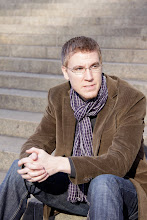Sacramental Experiences
Inge also works from a sacramental framework. He suggests a relational model of place, people, and God that he extracts primarily from the Old Testament.[1] As embodied creatures, place becomes integral to our interactions with God. Following Brueggemann, Inge says that history becomes lodged in place as “storied places.”[2] Profound events and memories embedded in place as mediators of divine presence are built into salvation history. The incarnation casts Jesus as the “new temple” as the place where God meets humanity.[3] By relating embedded events or storied places to the incarnation of Christ, which “initiates an unprecedented celebration of materiality,”[4] specific places and by extension the world takes on new meaning.[5] For Inge, neither time nor place have inherent sacramental qualities apart from each other.[6] Rather they cohere in sacramental events of times and places as the “seat of relations and of meeting and activity between God and the world.”[7] More particularly Inge says that sacramental events are “pure gift” of God’s action and human response.[8] Inge cites several examples in our Christian history: Constantine at Milvian Bridge, John Wesley at Aldersgate, Paul on the road to Damascus and Moses and the burning bush. Because these sacramental events are undertaken by first by God and received by particular humans, Inge rejects an intrinsic sacramentality of religious places.
Inge also suggests that the sacramental life of inside the church should have external implications as well. Experiencing God’s grace and presence in the sacraments should encourage us to seek the same disclosure in the world. And by seeking the sacramental in the world, should increase our appreciation of the sacramental life of the church.[9] Place becomes a powerful idea in connection with the site of the sacraments.
Inge recalls geographer Edward Relph’s words, “places are constructed in our memories and affections through repeated encounters and complex associations and place experiences are necessarily time-deepened and memory qualified.”[10] Places are unique not just because of geographical or architectural elements, rather places are unique and inseparable from the individuals and communities associated with it and tell its story”[11]
One of the things I greatly appreciated about Inge’s work was such a simple point. “The role of such place is to root believers in their faith and point them towards the redemption of all places.”[12] My initial concern with his work was the appeal to experience. Where would these experiences end? With the self? My fear is that such experiences only serve to insulate the individual instead of being rooted in the world. The experience begins and ends beyond the individual. Its starts with God’s action, received by humanity, and sends them to participate in further place making.
I agree with Belden Lane’s comments on Inge’s book that it is a fine summary of the landscape of place rather than a great contribution to the field. It is a very worthwhile journey for the reader to be brought into the conversation, but his constructive proposal place is only loosely defined.
[1] Inge, 46.
[2] Ibid., 54.
[3] Ibid, 55.
[4] Ibid, 52.
[5] Ibid, 66.
[6] I assume that this would too quickly devolve into idolization of the tangible world or too easily be considered pantheism.
[7] Ibid, 68.
[8] Ibid, 81.
[9] Ibid., 82.
[10] Ibid., 84.
[11] Ibid., 84.
[12] Ibid., 86.
skip to main |
skip to sidebar


An axis of access is a sacred place which our life revolves around. We hold them dear in our memory. They thrive in our imagination. They root us to this world. (To read more about the nature of this blog read the originating post from 08.07.07)
About Me

- rstander
- Grand Forks, ND, United States
- i am recent MFA grad from University of North Dakota. while i have range of interests, my ongoing research continues to explore the nature of place/space through artistic and liturgical lenses.
Labels
- abandonment
- aesthetics
- architecture
- Art
- artists
- books
- canada
- cartography
- commodified memory
- consumerism
- contested space
- CTS-AAR Photos
- Devotions
- Elevator Series
- Film
- graffiti
- individualism
- iowa
- kitsch
- lectionary readings
- liturgy
- Luke
- Mark
- minnesota
- misc.
- misc. education
- Montana
- music
- nationalism
- new topographics
- North Dakota
- northwestern college
- photographers
- photography
- pilgrimage
- PKAP
- priests in film
- printmaking
- Psalms
- questioning God
- religion as a chain of memory series
- retro signage
- sacred space
- saskatchewan
- scripture
- shoes
- sioux falls seminary
- south dakota
- stray shopping carts
- TH 541
- theological musings
- threshold series
- University of North Dakota
- Video
- visiting artists
- weather reports
Explore
- University of North Dakota
- Sioux Falls Seminary
- Northwestern College
- The Chronicle of Higher Education
- Inside Higher Ed
- College Theology Society
- Image Journal
- Christians in the Visual Arts (CIVA)
- College Art Association
- National Association of Baptist Professors of Religion (NABPR)
- American Academy of Religion
- The Ekklesia Project
- Speaking of Faith
- NT Wright Page
- Textweek.com
- Good Shepherd Episcopal
- Internet Movie Data Base (IMDB)
- The Simpson's
Exhibition Opportunities
Theology & The Arts
Theology and the Arts Academic Programs
My Blog List






